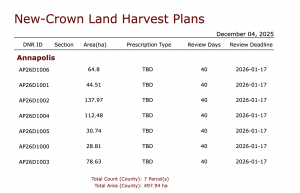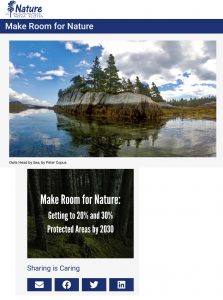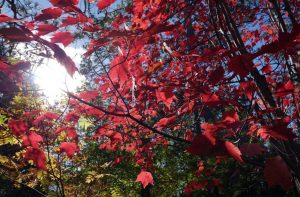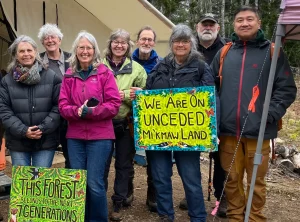We all need to work together. In the end, the well-being of our communities and the natural world depend on trust and good will, as do markets.
Post/Page on Nova Scotia Forest Matters
By David Patriquin
CONTENTS
- The WestFor 12-month Plans
- The PHP 5-yr Pilot Project
- Requested public input
- Forestry EA, OBFM and strategic-level planning
Subpage: Re: PTAs for the WestFor 12-month plans(?) - Cherry-picking
- The Triad as a compromise (or not)
- Making the Triad work for all of us
- Some related posts, links
The WestFor 12-month Plans
On Dec 8, 2025, Nova Scotia Forestry Maps provided subscribers of Harvest Operation Maps an announcement/opportunity-for-comment on proposed harvests of 76 parcels/5642 ha of Crown Lands.
*These notices are not posted or archived on the NS Gov website. so you have be a subscriber to view them. More recent ones are available on NSFM.








